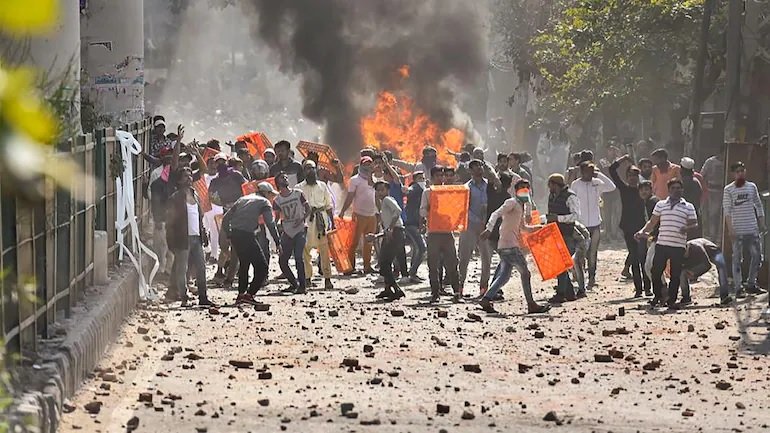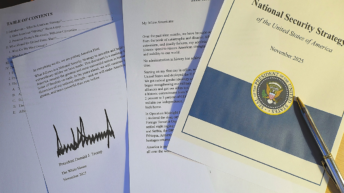
Bharat has been rocked by a large scale coordinated anti-establishment rhetoric culminating in meticulously planned violence in recent times. The recurring violence has been masked by instigated dissent in order to distract the lay observer and the participant from the larger concerted action against the Indian State. Whether it was the North East Delhi violence of 2020 or the Farmer protests turning against the State in 2021, it appears that there are persistent efforts which go beyond the shores of Bharat to destabilize its democratically elected government and cut Bharat to size internationally. Clearly, Delhi, as the capital, has not been taken hostage for the last time.
As the world moves towards urbanisation and as we develop megacities, warfare too, will find its way into urban centres. In the layperson’s imagination warfare is usually limited either to the border areas or to forested areas, in any case away from the assumed safety of an urban demography. However, it is the very heterogeneity of the urban landscape and the unpreparedness of the State that will create the ideal circumstances for armed anti-State “protests”.
Therefore, in order to effectively comprehend and further design a response to the violence that India has been witnessing in its urban centres, it is imperative to recognise the benignity of the nomenclature used so far. The North East Delhi violence of 2020 was softly labelled “rioting” and so were the recent farmer protests that too culminated in “riots”. Except, the problem lies in the fact that according to IPC 146 riots are defined as “ force or violence used by an unlawful assembly, or by any member thereof, in persecution of the common object of such assembly, every member of such assembly is guilty of the offence of rioting”. Unfortunately, the violence in Delhi by any standard of definition cannot be bound within the simplistic parameters of a “riot”.
The fact that this was much more than a riot became amply clear once the Delhi Police filed its 17,000 page charge sheet under the Unlawful Activities (Prevention) Act (UAPA). This was clearly an act of terror against Bharat. The protests acted as a veil for the agenda of not just attacking the regime but the state itself. Dissent became just an excuse for anarchy. The plot was to undermine the legislative process and aimed at mobocracy overwhelming the law of the land. Therefore, in reality, this violence did not fall within the ambit of mere “riots”. Riots are defined more from the lens of public disturbance but certainly do not aim to overthrow the very foundations of a nation. This violence proved that it was aimed at destroying the sovereignty of India. In reality, what Bharat witnessed were not riots but the age of new Urban Warfare.
The farmer protests this year too were not any different; what started out as a protest by a tiny fraction of farmers in India turned into violence. In an unprecedented move protestors even hoisted a religious flag on the forecourt of Red Fort, reserved for the national flag. To say that this was just a move of defiance would mean overlooking the role played by international pro-Khalistan groups.
Therefore, in both cases the stringent sections of sedition and the UAPA were rightly invoked. These included conspiracy to commit terrorist acts (Section 18, UAPA) as well as the actual commission of terrorist acts (Section 15) and ‘unlawful activities’ (Section 13). These acts would not have been applied if there wasn’t a deliberate effort to destabilise India by secessionist forces; in any other case, provisions that would have been invoked would have been limited to destruction of property or criminal activity.
As Urban centres become more populated and grow in number, future combat will move to the cities. And one will be compelled to accept that this is the age of new Urban Warfare, partially different from the imagery of war in the traditional sense but with the same goal to be achieved. Political protests will become just tools in the hands of non- state actors or quasi non state actors. The use of hybrid warfare, ranging from political, cyber and conventional to irregular will create a new set of hurdles, all under the glare of the media making international interference and scrutiny sharper. What we intend to keep internal will by default attract international interest, making suitable responses even more complicated.
However, we are not the only country facing new Urban Warfare and grappling to come to terms with it. During the Black Lives Matter (BLM) protests that turned violent in the United States of America, US Attorney General William Barr said in an interview that the protestors had flooded US cities with a new form of “urban guerrilla warfare”; he went on to describe their modus operandi, explaining that while exercising their First Amendment activity, infiltrators would become part of demonstrations and shield themselves till they hijacked the very demonstration and incited violence. Other state officials also declared that what they were facing as BLM protests was in reality a “sophisticated network of urban warfare”.
The difference, however, is that in countries like the US the police are equipped like the military, therefore they act like it at critical junctures during conflict. Of course, one could argue about the drawbacks of heavy militarisation but no argument would justify police officers doing their duty being attacked, jumping into drains to protect themselves and dying because we choose to believe that the police must just serve and protect armed with only sticks and raw courage.
In India, when violence erupted the perpetrators were prepared. Our police were neither equipped nor trained to take on such minutely planned vicious levels of mayhem. Until the paramilitary forces arrived, the Delhi Police bore the brunt of the carnage. Later 35 companies of paramilitary forces (over 7000 paramilitary soldiers) were deployed during the NE Delhi violence and 15 companies of paramilitary forces (approximately 2000 soldiers) were fielded during the breach at Red Fort. This is the face of “new urban warfare” , not “riots”, and the sooner we stop dismissing these acts as mere riots, the faster we will be able to design an appropriate response mechanism, because this is just the beginning.
To this end, the first step is to use the right term, namely new urban warfare, which conveys the seriousness of the problem and the altered paradigm. This must be followed by building a thorough conceptual framework which provides the existing legal framework with the necessary dialectical support and also examines it for adequacy. Minus these two steps, despite the existence of legal provisions to address this new monster the Indian State will always fight an uphill and losing battle in the Court of international public opinion which refuses to look past the done to death cliché of free speech and dissent.






‘Law & Order’ concept , an archaic left over of British Raj, is grossly inadequate to meet the present day challenges of ‘internal security’. Cliche of”Law will take it’s own course” can not work against jihadi and Maoist 3rd front, which have to be treated at par with the terrorists and infiltrates. Suitable legislation, suitable force and suitable doctrine are needed asap.
Appreciate Ms. Desai’s attempt in defining Delhi riots and Farmer protests aptly describing both as “urban warfare”. Written with lot of clarity and a very pragmatic analysis of the current state of well designed program against the state.
With increased upper hand with urban naxalism and fake intellectual intolerance state and local Governments duly elected by peaceful process , can impose need based local emergency in any area and areas in other state with centres help to arrest without warrant and use force to uphold right to rule until next elections are due in a democracy. Elected governments can take any measure to safeguard guard peace loving subjects who elected them.